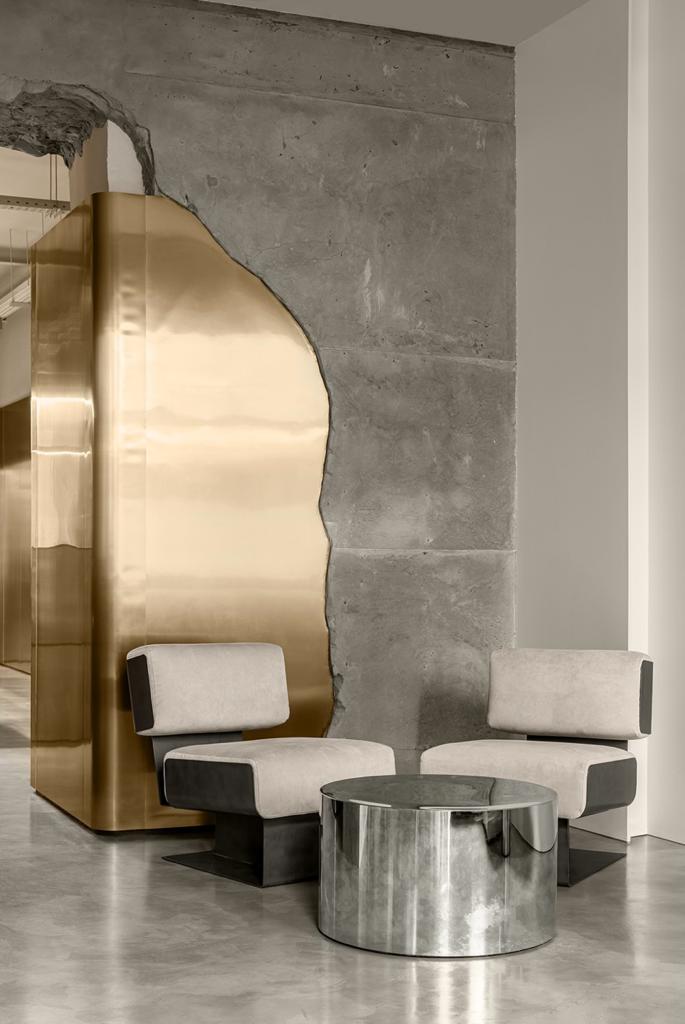
As unexpected as it might seem, there is in fact a fluid side to metal that we can observe even after it has been wielded into a particular shape. The aspects where we can find this fluidity are not in its tactile form but rather through its dialogue with light, other materials, and even with interior decor. Metal holds a unique allure for design due to its versatility, aesthetics, and durability. This innate ability to effortlessly merge into furnishings or enhance styles such as industrial and classic designs, is precisely what makes it so flexible.
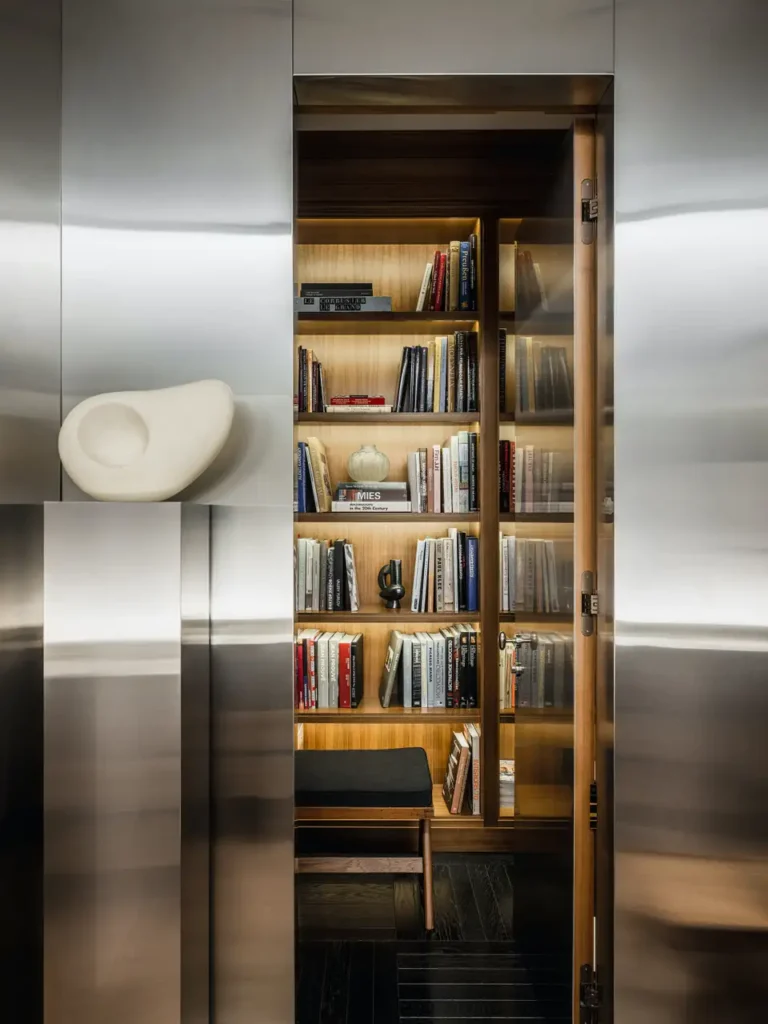
Moreover, when we talk about metals the possibilities seem endless as not only are their uses widespread but we also have a generous list of types that we can choose from. Copper, for example, is renowned for its warm reddish-brown hue that carries a rustic feel as well as antimicrobial properties to your interior. If not, there is also stainless steel, prized for its sleek and enduring appearance that fits modern and industrial styles. Or perhaps, what you’re looking for is the elegant touch that brass endows with its golden tones. Thus, each one brings its unique charm and convenience to our interiors, just like dancers to a stage.
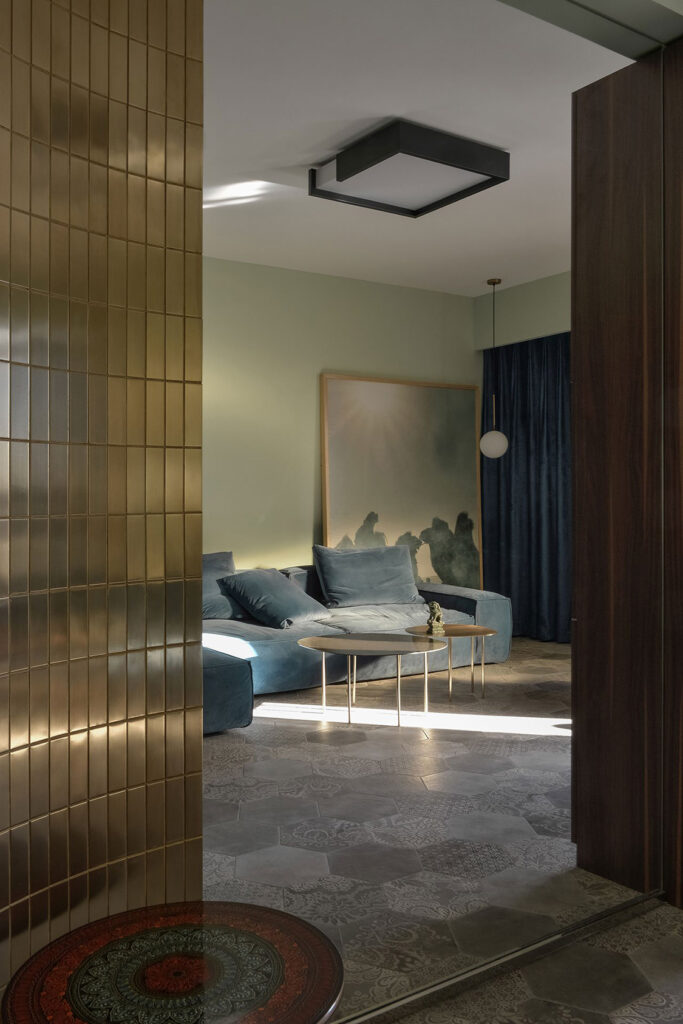
A light touch of metal
Faint traces of metal, regardless of size, can also create a powerful statement depending on the form and life we give them. Its use in accessories such as vases, sculptures and frames can certainly add a touch of shine and sophistication. However, why not take an unusual and captivating new way of utilizing metal accents by incorporating them for example, as intricate crafts that imitate the natural flow of tree branches or vines, forming the legs of a coffee table or as an impressive wall relief.
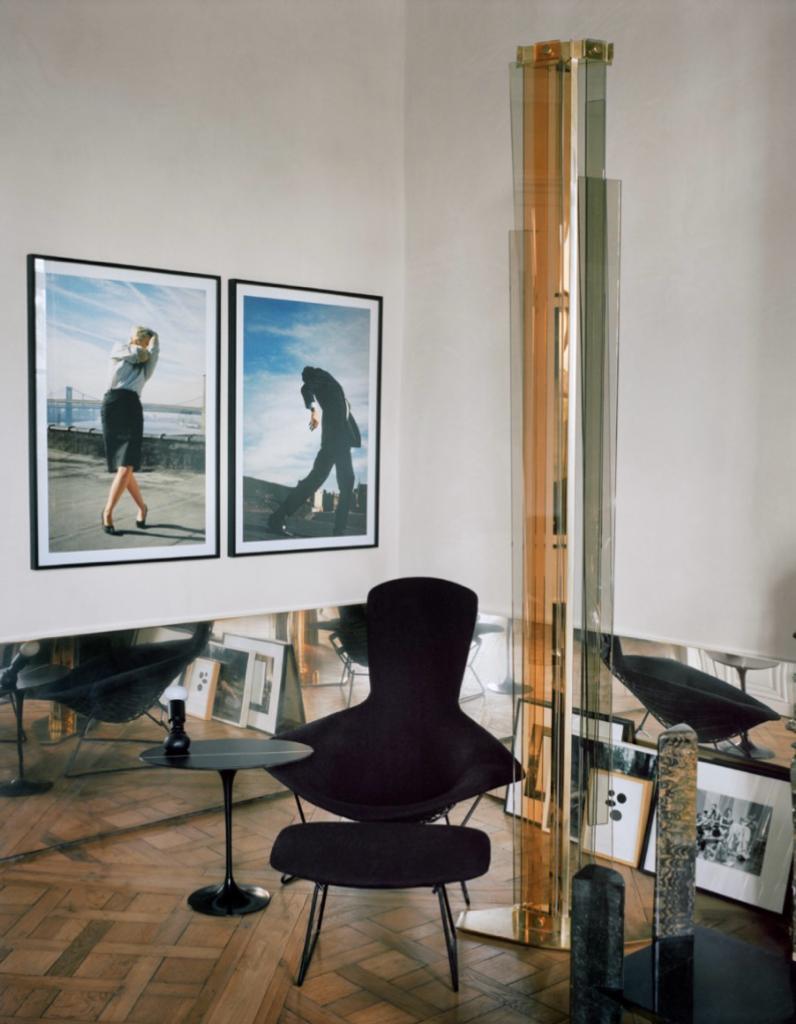
A statement through furniture
One of the most convenient and appealing aspects about metal is that it can work in beautiful synchrony with various materials to create visually stunning mixed-material furniture made with a mixture of wood, glass, or stone. Just imagine a conventional sofa that transforms into a bed with the help of a sturdy framework comprising sleek, hidden metal components that enable the sofa to seamlessly adjust to its new shape. The same effect can be transferred to a foldable coffee table that extends its surface using metal hinges to trouble its size. This reminds us that metal can also work in silent ways to create something as effective as it is beautiful.
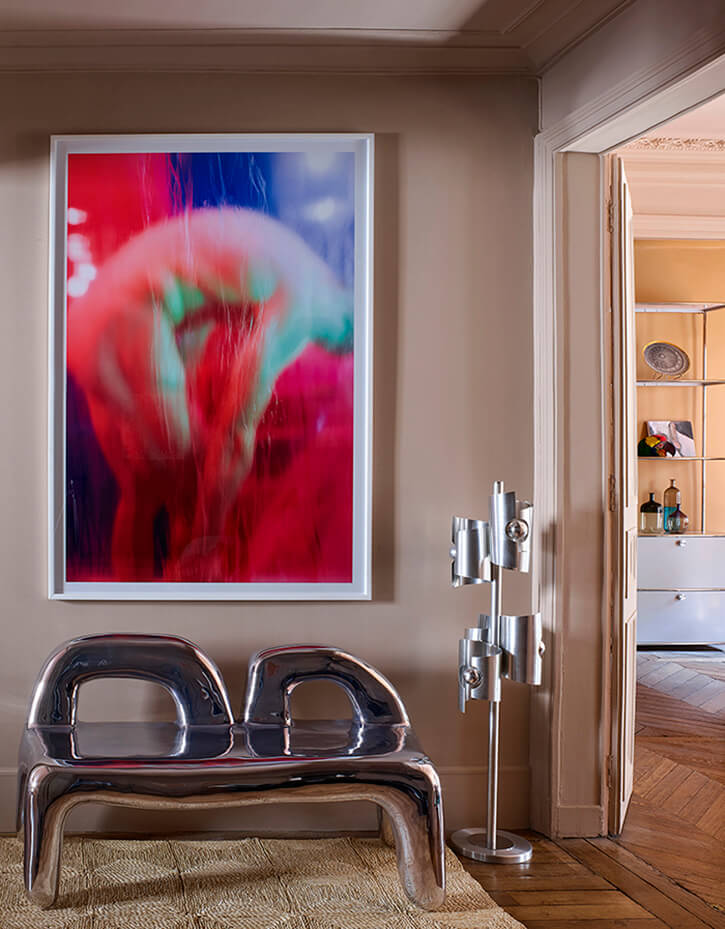
Finding depth in metallic finishes
Once more, metal demonstrates how easily it can be adapted to any space or surface as we make use of it in the form of metallic finishes on walls, ceilings, or architectural structures. Its textured and reflective nature infuses surfaces with elegance while adding depth and character to a room. These finishes can be incorporated into decor even in unconventional ways such as by using iridescent or holographic coatings on walls and furniture surfaces. Just imagine the hypnotic effect created by the shifting of light and subtle color changes across a room coated in metallic paint. Thanks to this effect we can be transported to an ethereal and enchanting ambience that surprises and delights our senses.
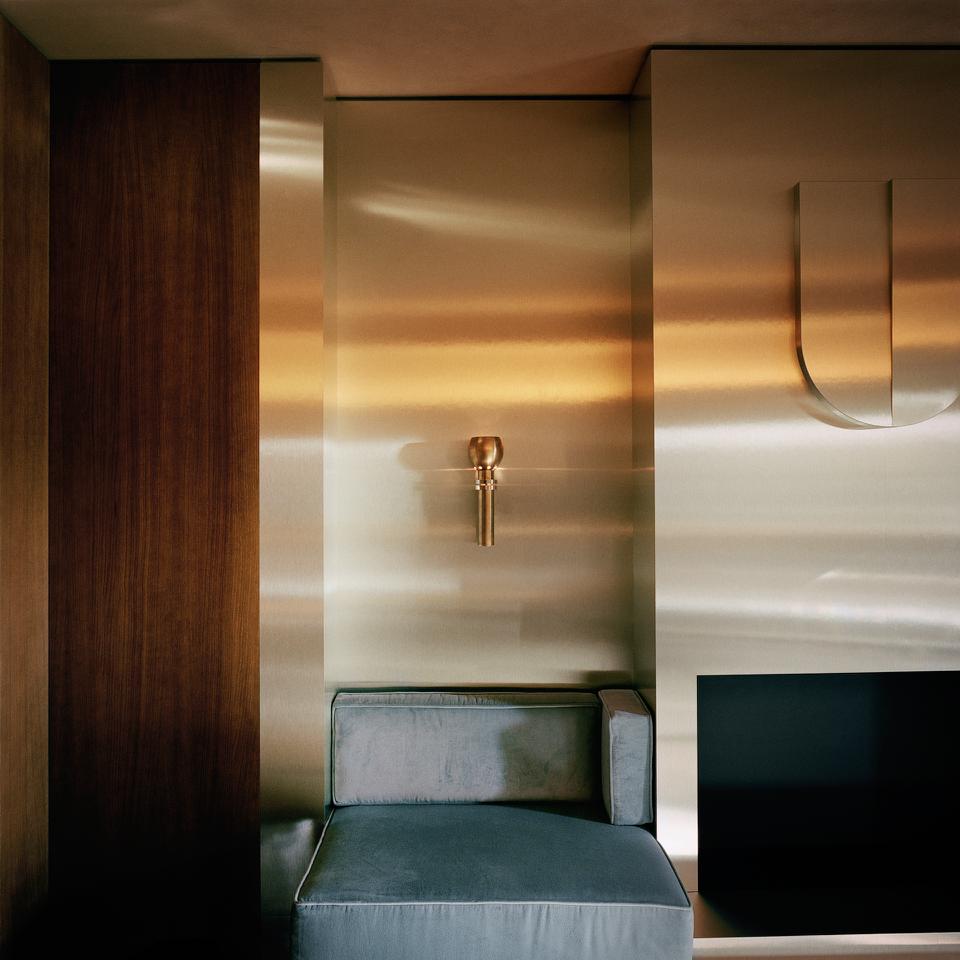
Transforming lighting with metal
Of all decor elements in an interior, lighting fixtures provide a particularly engaging canvas on which to study the luminosity and transformative effects of metal. It is through creative lighting designs such as pendant lights, chandeliers, or floor lamps that we can clearly observe how this material dances across a room, creating captivating patterns and casting unique shadows to entertain our eyes. For example, an unexpected use of metal in lighting involves the use of 3D-printing technology to craft intricate and organic-inspired designs that result in delicately woven filaments that imitate nature or even celestial shapes. When illuminated, these fixtures truly come to life, basking interiors with their dynamic artistry created through innovative technology.
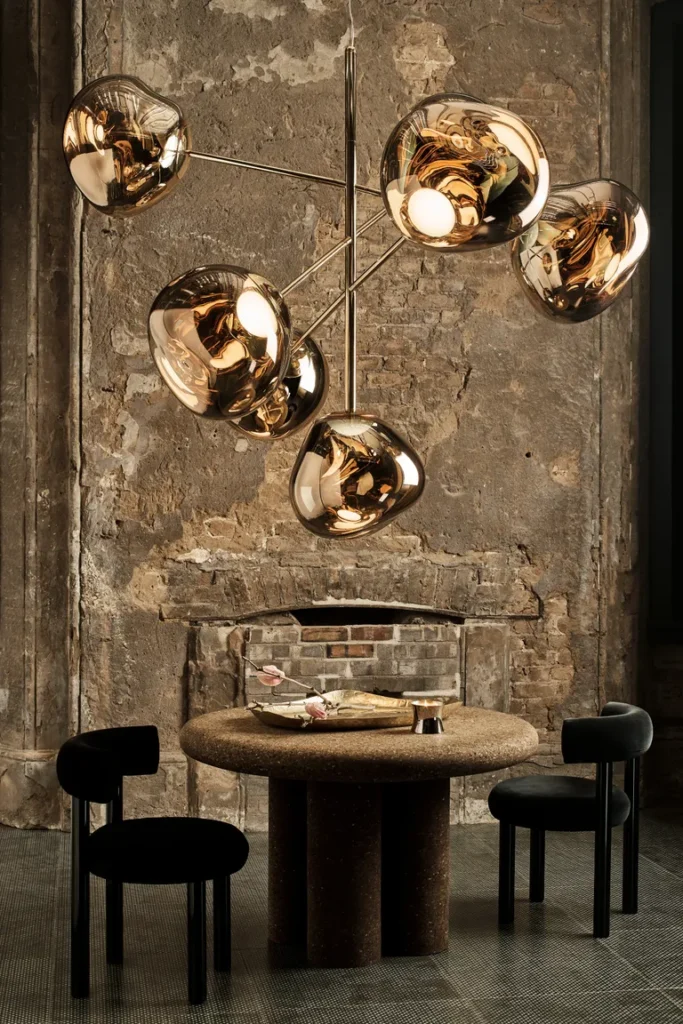
Make your tiles and backsplashes shine
If you are going for a bold, modern look and searching for natural ways of incorporating metal to your interior’s structure, try adding metal tiles or backsplashes in areas such as the kitchen and bathrooms. Stainless steel, copper, or brass offer this contemporary aesthetic and warm, rustic appeal at the same time. In fact, these features can also belong to more unconventional spaces such as within built-in furniture or cabinetry; simply picture a kitchen island with metallic tile insets along its sides or a metallic built-in bookshelf with tile backing. This approach elevates the appeal of functional pieces with a captivating design that hovers between modern and industrial.
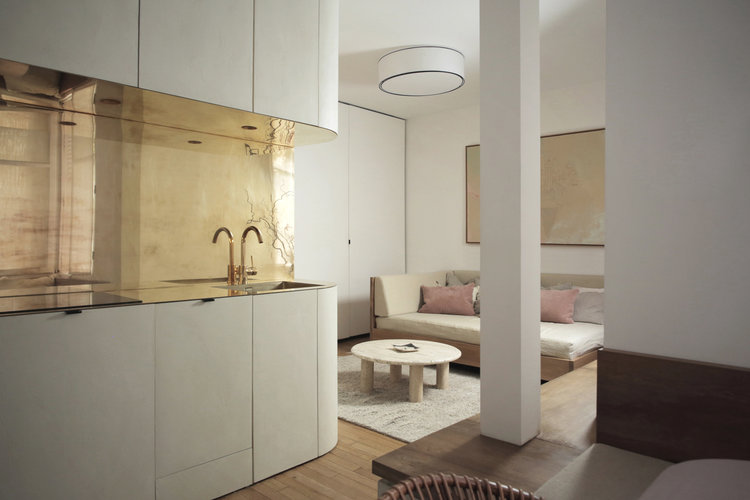
Playing with metal with custom pieces
Lastly, metal can also become a means of expressing your style and tastes through one-of-a-kind pieces that can either serve for solely aesthetic purposes or for specific functionalities. In this case, one must turn to the captivating use of custom metal designs such as room dividers, stair railings, or shelving units tailored especially to the space in question. In other instances, we can also incorporate custom metal artwork within our architectural design by means such as sculptural metal screens or panels with a weaving design or unique pieces that feature intricate geometric patterns and abstract motifs casting shadow and light effects. Instead of focusing solely on the functional aspect of metal, we can take this artistic approach to endow our interiors with an interactive element, allowing the lighting effects and dynamic forms to guide us through a visual experience.
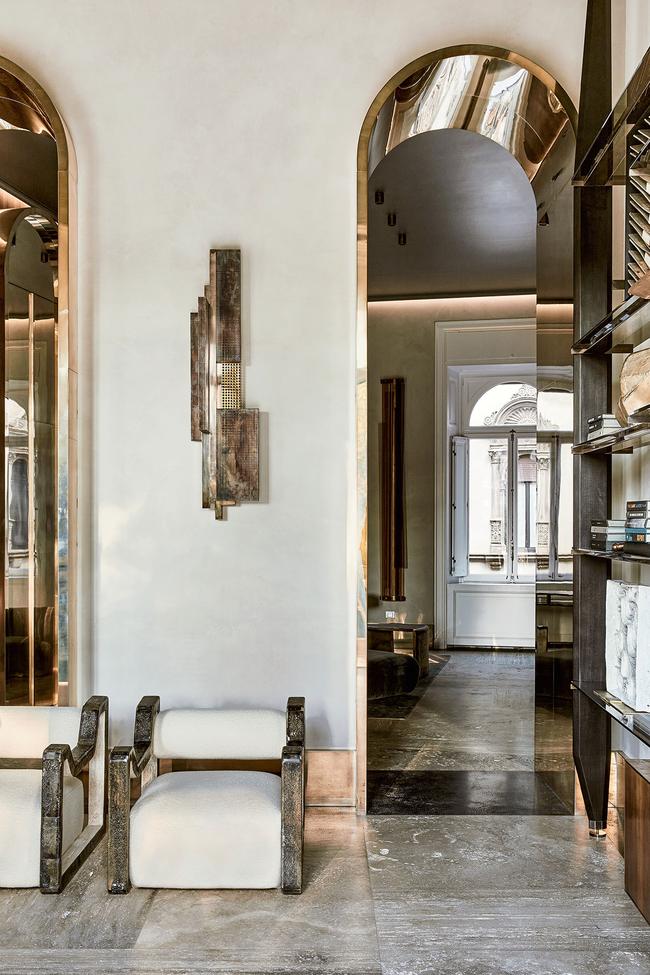
End note on metal
Among different materials we can use for interior design, metal possesses a unique ability to foster a fluent dialogue with its surroundings by juxtaposing elements like texture, color, and form. This perfect symbiosis of elements is possible thanks to the play of light and shadow on metallic surfaces and the reflective nature that this material is endowed with. Moreover, the flexibility to use metal in various forms accounts for interiors that are both functional and artistic.
